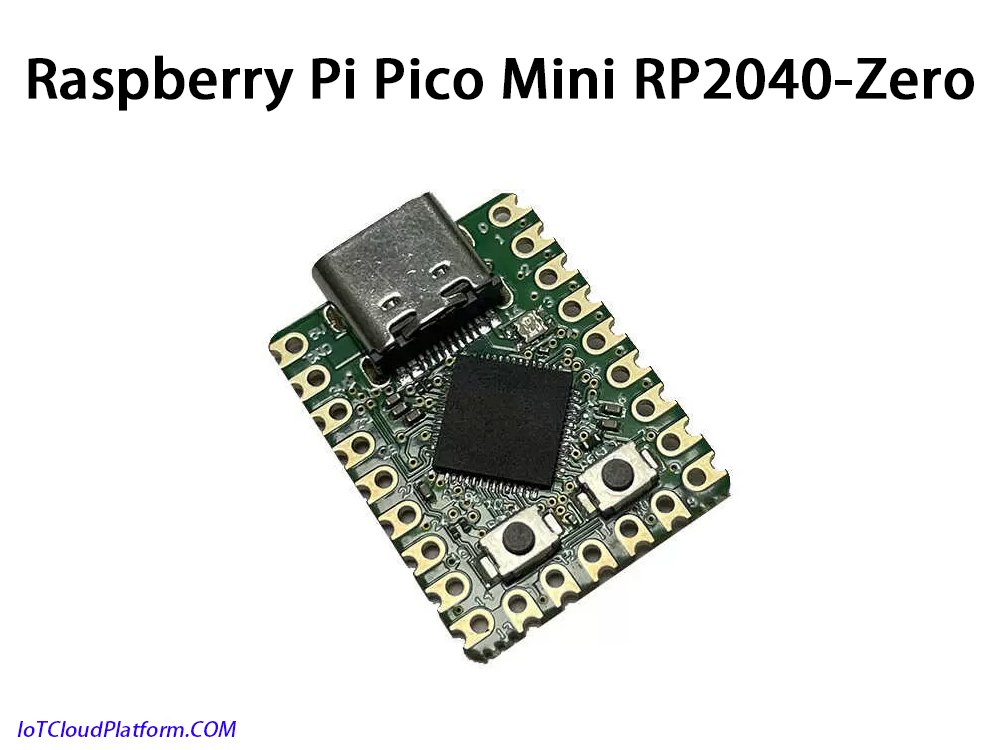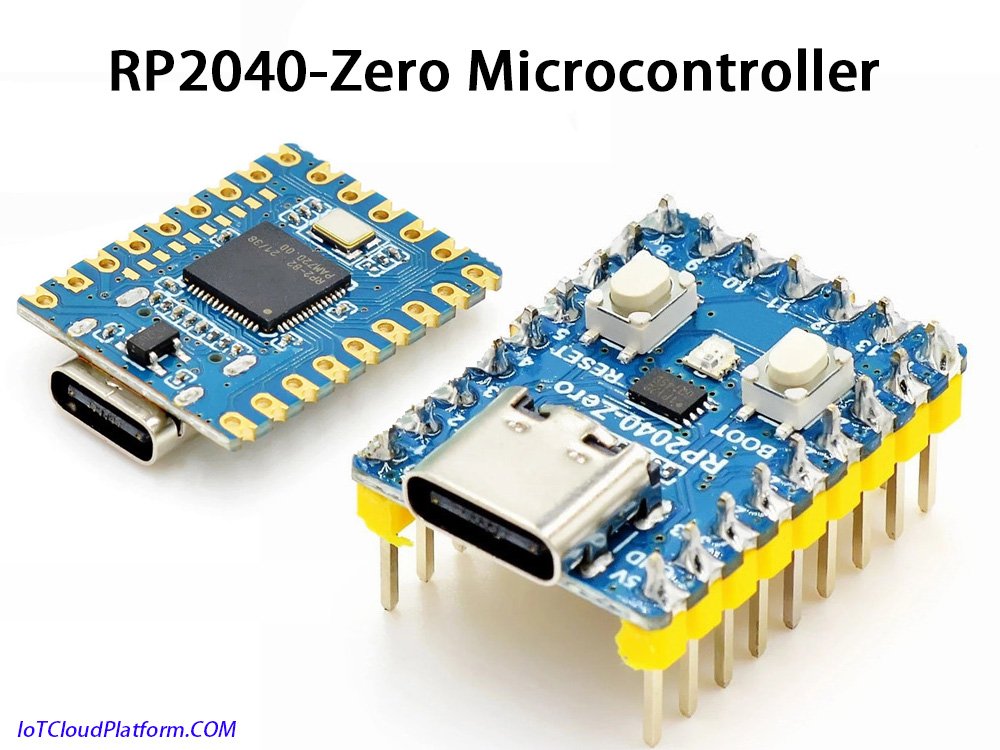
RP2040 ZERO Vs ESP32 C3
Both RP2040 Zero and ESP32-C3 are currently popular microcontrollers in the market. They are widely used in the fields of IoT, embedded system development, etc.
The following is a detailed introduction and comparative analysis of the two microcontrollers.
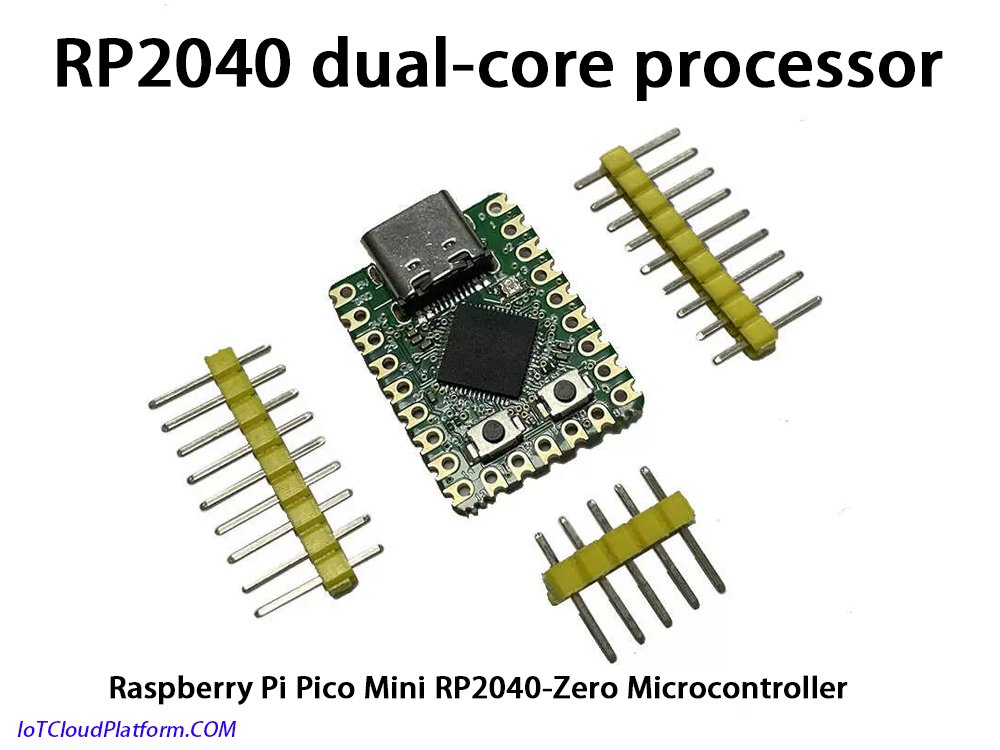
Raspberry Pi Pico Mini RP2040-Zero microcontroller development board RP2040 dual-core processor
RP2040 Zero Detailed Introduction
1. Core Features
RP2040 Zero uses the RP2040 developed by Raspberry Pi as the core, which is a dual-core microcontroller designed for low-power IoT applications. It is equipped with a dual-core ARM Cortex-M0+ processor, running at up to 133MHz, and has a flexible clock system. In addition, RP2040 Zero has built-in 264KB SRAM and 2MB onboard Flash, providing developers with ample storage space.
2. Pins and interfaces
RP2040 Zero has all unoccupied pins, up to 20 multi-function GPIO pins, and a rich set of peripheral interfaces such as 2 SPI, 2 I2C, 2 UART, 4 12-bit ADC and 16 controllable PWM channels in a very small board. These interfaces enable RP2040 Zero to easily connect to various sensors and actuators to meet the needs of IoT applications.
Raspberry Pi Pico Mini RP2040-Zero
3. Development environment
RP2040 Zero supports multiple programming languages such as C/C++ and MicroPython, and is equipped with a complete SDK and open source tutorials to facilitate developers to quickly get started and develop applications. In addition, RP2040 Zero also supports drag-and-drop downloading of programs through the USB interface, which greatly simplifies the development process.
4. Other features
RP2040 Zero also has low-power sleep and hibernation modes, and can be identified as a large-capacity storage device for data transmission through USB. At the same time, it adopts the Type-C interface design, keeping up with the trend of the times, without worrying about whether to plug it in the right or wrong direction. The stamp hole design allows the RP2040 Zero to be directly soldered and integrated into the user-designed baseboard, enhancing its flexibility and scalability.
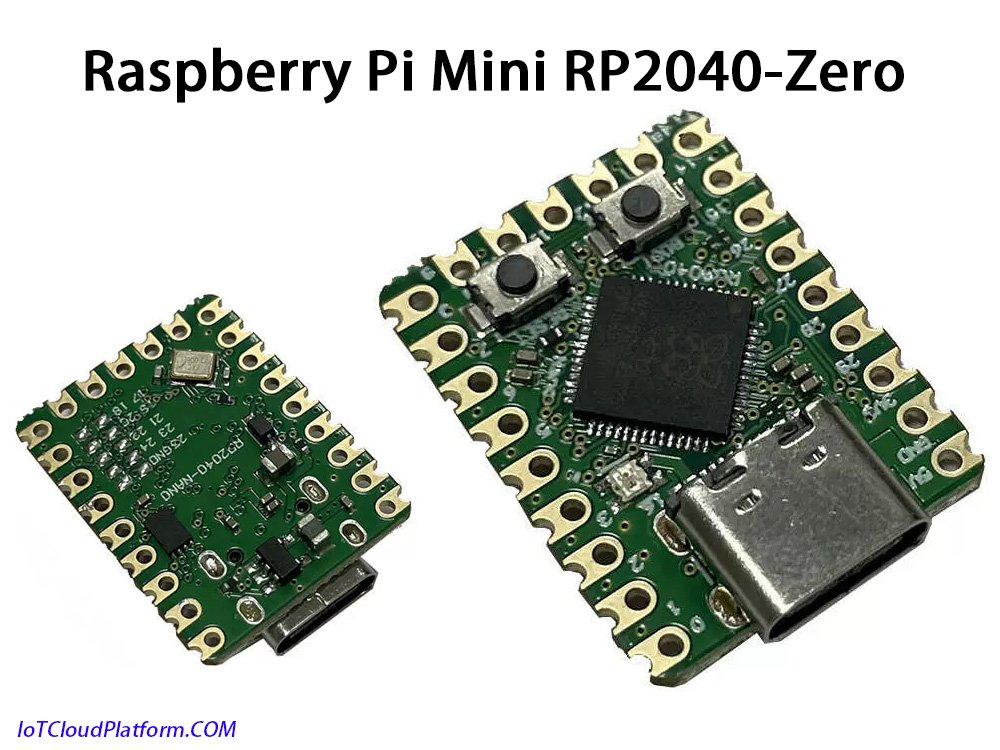
Raspberry Pi mini RP2040-Zero
5. RP2040 Zero PDF Download
RP2040 Zero Schematic PDF Download, Rp2040 zero diagram.
6. RP2040 datasheet pdf
Raspberry Pi Pico datasheet an RP2040-based microcontroller pico-datasheet pdf.
7. Pico-R3-A4-Pinout PDF
8. Raspberry Pi RP2040 microcontroller download:
Raspberry Pi Pico RP2040 microcontroller test routine download address: https://github.com/AnWen238/iotcloudplatform.com/tree/main
9. MicroPython Firmware
RP2040 Raspberry Pi firmware test data download: https://github.com/AnWen238/iotcloudplatform.com/tree/main
ESP32-C3 detailed introduction
1. Core features
ESP32-C3 is a secure, stable, low-power, low-cost IoT chip equipped with a RISC-V 32-bit single-core processor. This processor adopts a four-stage pipeline architecture and has a main frequency of up to 160MHz, providing powerful computing power for IoT applications. At the same time, ESP32-C3 has built-in 400KB SRAM (of which 16KB is dedicated to cache) and 384KB ROM storage space, and supports multiple external SPI, Dual SPI, Quad SPI and QPI flash expansion storage options.
2. Communication interface
ESP32-C3 has a complete Wi-Fi subsystem, complies with the IEEE 802.11b/g/n protocol, and supports multiple working modes such as Station mode, SoftAP mode, SoftAP+Station mode and promiscuous mode. In addition, it also supports low-power Bluetooth subsystems, including protocols such as Bluetooth 5 and Bluetooth mesh. These communication interfaces enable ESP32-C3 to easily connect to the Internet and interact with data.
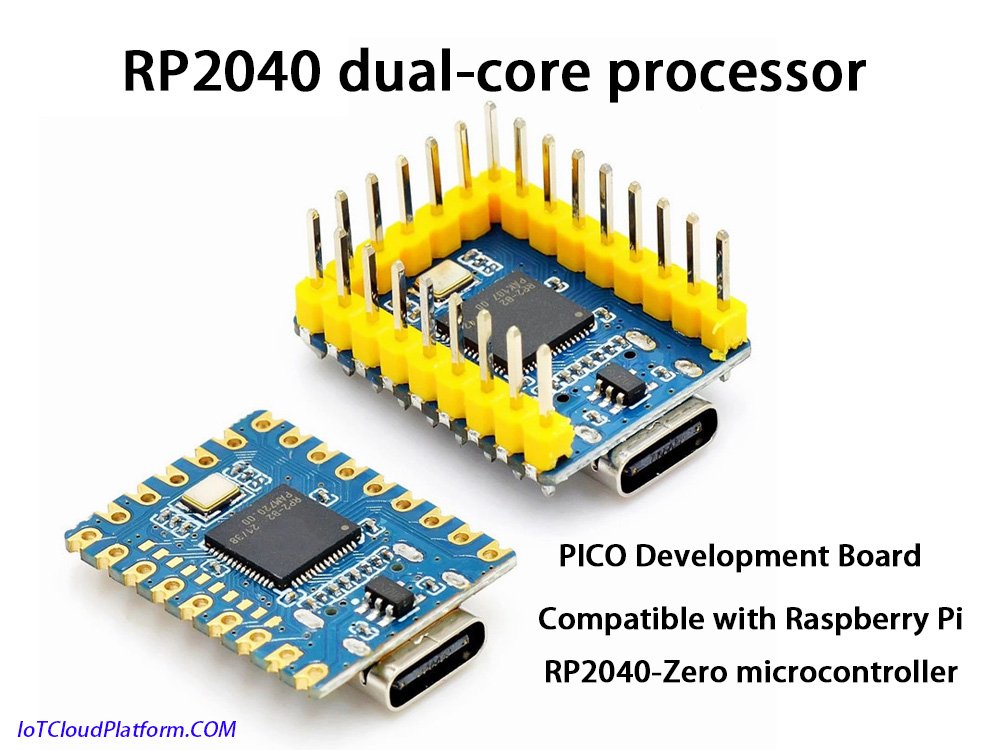
Compatible with Raspberry Pi RP2040-Zero microcontroller PICO development board RP2040 dual-core processor
3. Security mechanism
ESP32-C3 has a complete security mechanism, including hardware encryption accelerators that support encryption algorithms such as AES-128/256, Hash, RSA, HMAC, as well as digital signatures and secure boot functions. At the same time, it also integrates a true random number generator and supports access rights management for on-chip memory, off-chip memory and peripherals, further improving the security of the system.
4. Development environment
ESP32-C3 supports multiple programming languages and development environments, such as Arduino IDE, PlatformIO, etc. These development environments provide rich library functions and sample codes to help developers quickly build IoT applications. At the same time, ESP32-C3 also supports OTA (Over-The-Air) update function, allowing the device to upgrade firmware without disassembling the device.
Comparison Analysis between RP2040 Zero and ESP32-C3
1. Performance Comparison
In terms of performance, RP2040 Zero and ESP32-C3 have their own advantages. RP2040 Zero uses a dual-core ARM Cortex-M0+ processor with a running frequency of up to 133MHz, while ESP32-C3 is equipped with a RISC-V 32-bit single-core processor with a main frequency of up to 160MHz. Although the main frequency of ESP32-C3 is slightly higher, the dual-core design of RP2040 Zero gives it an advantage in multitasking. In addition, the ADC of RP2040 Zero has high accuracy and shows good linearity, which is suitable for application scenarios that require high-precision analog signal acquisition.
RP2040-Zero Microcontroller
2. Communication Interface Comparison
In terms of communication interface, ESP32-C3 has a complete Wi-Fi subsystem and a low-power Bluetooth subsystem, supporting multiple communication protocols and working modes. This gives ESP32-C3 a wider range of connectivity and data interaction capabilities in IoT applications. The RP2040 Zero mainly relies on its rich GPIO pins and peripheral interfaces to achieve connection and data transmission with other devices. Although the RP2040 Zero can also perform data transmission and program download through the USB interface, it is relatively weak in wireless communication.
3. Comparison of security mechanisms
In terms of security mechanisms, ESP32-C3 has a complete security mechanism and hardware encryption accelerator that supports a variety of encryption algorithms and security functions. This makes ESP32-C3 more advantageous in IoT applications that require high security requirements. The RP2040 Zero mainly improves the stability and scalability of the system through its low-power design and flexible pin configuration, and is relatively weak in security mechanisms.
4. Comparison of development environment and application scenarios
In terms of development environment, both RP2040 Zero and ESP32-C3 support a variety of programming languages and development environments, providing developers with a wealth of choices and convenience. However, in terms of specific application scenarios, the two are different. RP2040 Zero is more suitable for application scenarios that require high-precision analog signal acquisition, low-power design and flexible pin configuration, such as sensor networks, smart home control systems, etc. ESP32-C3 is more suitable for application scenarios that require extensive connectivity, high security requirements and complex communication protocols, such as smart wearable devices, smart home center controllers, etc.
5. Cost and scalability comparison
In terms of cost and scalability, both RP2040 Zero and ESP32-C3 have certain advantages. RP2040 Zero adopts a stamp hole design, which can be directly soldered and integrated into the user-designed baseboard, enhancing its flexibility and scalability.
At the same time, the price of RP2040 Zero is relatively affordable, suitable for low-cost IoT applications. ESP32-C3 provides developers with more choices and expansion space through its rich peripheral interfaces and communication protocol support.
In addition, ESP32-C3 also supports a variety of low-cost modules and certification options, further reducing development costs and risks.
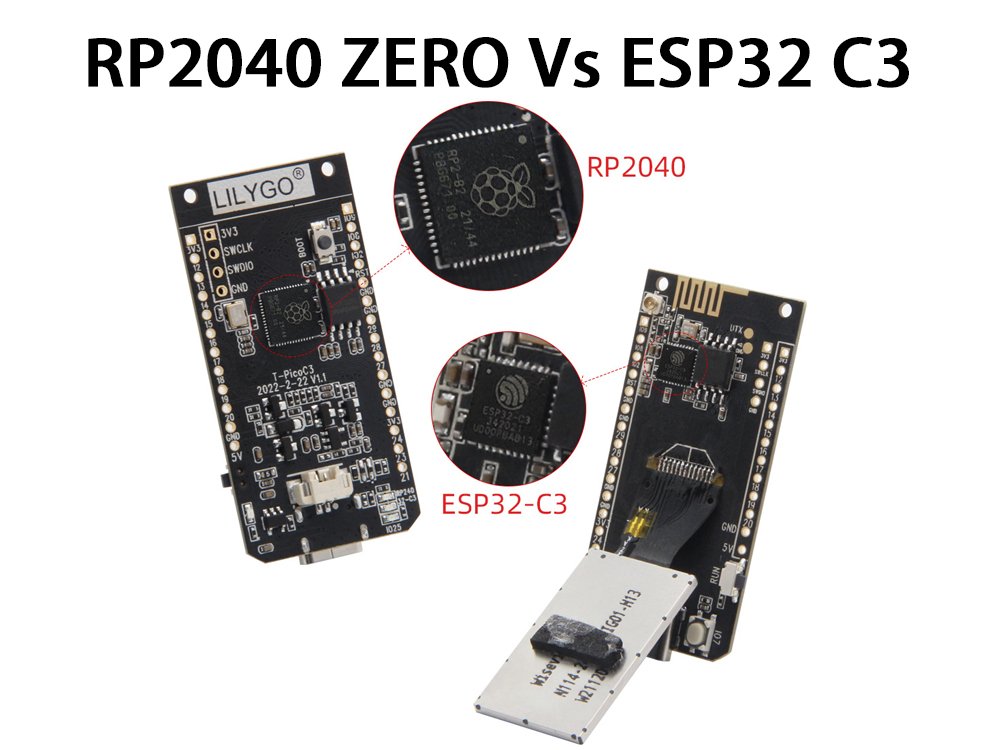
RP2040 ZERO Vs ESP32 C3
Summary
In summary, RP2040 Zero and ESP32-C3 are both microcontrollers that are currently attracting much attention in the market. They have their own advantages in performance, communication interface, security mechanism, development environment and application scenarios.
IoT developers should weigh and choose according to their specific needs and project requirements.
For application scenarios that require high-precision analog signal acquisition, low-power design, and flexible pin configuration, RP2040 Zero may be a better choice; for application scenarios that require extensive connectivity, high security requirements, and complex communication protocols, ESP32-C3 has more advantages.
About IoT Cloud Platform
IOT Cloud Platform (blog.iotcloudplatform.com) focuses on IoT design, IoT programming, security IoT, industrial IoT, military IoT, best IoT projects, IoT modules, embedded development, IoT circuit boards, IoT solutions, Raspberry Pi development and design, Arduino programming, programming languages, RFID, lora devices, IoT systems, sensors, lithium batteries, RFID, chips, semiconductors and other scientific and technological knowledge.
FAQs
Here are the answers to frequently asked questions about RP2040 ZERO and ESP32 C3:
RP2040 ZERO is a development board based on the RP2040 microcontroller, with the characteristics of high performance, low power consumption and flexible IO interface. It supports multiple programming languages and development environments, and is suitable for the fields of Internet of Things, embedded systems, etc.
RP2040 ZERO supports multiple programming environments, including MicroPython, Arduino and C/C++. These environments provide rich libraries and functions to facilitate developers to quickly develop and debug.
RP2040 ZERO itself does not directly support wireless communication functions, but can achieve wireless communication functions through external wireless communication modules (such as WiFi, Bluetooth modules).
ESP32 C3 is a high-performance, low-power IoT microcontroller with powerful processing power and rich peripheral interfaces. It supports multiple communication protocols, including WiFi, Bluetooth, etc., and is suitable for various IoT application scenarios.
Common problems encountered by ESP32 C3 during WiFi network configuration include not being able to find the WiFi AP (access point), incorrect WiFi password, insufficient signal strength RSSI due to being too far from the AP, etc. These problems can be solved by limiting the input of the WiFi name, sending back error codes from the device, automatically memorizing the password, and adjusting the distance between the device and the AP.
Yes, ESP32 C3 supports secure boot and Flash encryption. These features can protect the device’s firmware from being illegally copied and tampered with, and improve the security of the device. However, when turning on these features, you need to pay attention to the operating specifications during the burning process to avoid problems such as incomplete burning or data corruption.
There are some limitations that need to be noted when using the GPIO pins of ESP32 C3. For example, some pins may only have input functions but no output functions, or some pins cannot be used for PWM output, etc. During the development process, you need to carefully read the data sheet and development documents of ESP32 C3 to understand the specific limitations and usage of the GPIO pins.
RP2040 ZERO and ESP32 C3 have their own advantages in performance. RP2040 ZERO has the characteristics of high performance and low power consumption, which is suitable for application scenarios with high processing power and power consumption requirements. ESP32 C3 has powerful communication capabilities and rich peripheral interfaces, which is suitable for various IoT application scenarios. The specific chip to choose depends on factors such as application requirements and budget.
Both RP2040 ZERO and ESP32 C3 support a variety of programming environments and development tools, but they are different in specific implementation. For example, RP2040 ZERO focuses more on simple and easy-to-use programming environments such as MicroPython and Arduino, while ESP32 C3 provides more C/C++ development libraries and functions. In addition, there are differences in IDE selection and configuration between the two, and they need to be selected according to specific needs.
